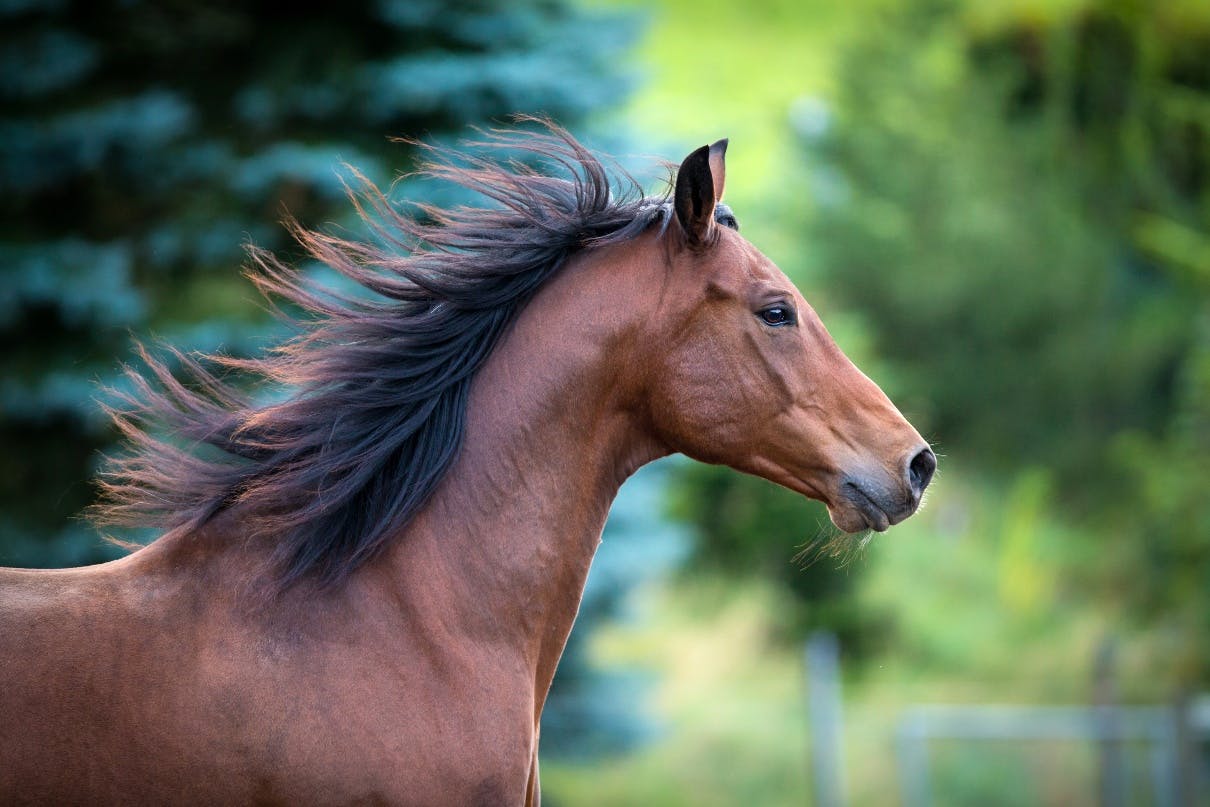
How to Avoid Horse Rug Marks and Sores
Horse
Health and Wellbeing
Care
08/05/2023
It is very common to see rub marks from late January to early March on horses who otherwise would never get them. During January to March horses grow out of their thin summer coat with a thicker winter coat. During this time a horse coat is more susceptible to rub, especially when combined with humid/wet weather that can increases friction from rugs.
A good fit will reduce the likelihood of your horse developing rub marks on the pressure points from a rug. We design our rugs to ensure that pressure on the chest and shoulders is kept to a minimum. We also incorporate anti-rub linings in our rugs. Keep in mind that some rugs are heavier than others (like Fly mesh or Turnout Rugs) and these will apply more weight to pressure points. Rub Marks are caused from a combination of:
Most often the rug sizing being used is incorrect, or the horses have features which make them more susceptible to pressure point marks (i.e. high wither, very lean build etc). If a rug is to small you generally see rub marks on the shoulders, if it’s too big you tend to get rubbing more on the front chest area as the rug slides back over the wither.
During January to early March when horses grow out their summer coat with a thicker winter coat.
Wearing rugs for extended periods (i.e.: over winter) will eventually have an impact on pressure points. Bibs are advisable
Some horses have more sensitive coats and will be fine in lighter rugs (like ripstop cotton) but may have issues in fly mesh or turnout combos which are heavier. Fine coats and are more susceptible to rubbing and may need a bib under heavier rugs to provide an extra layer of padding.
Common Fit and Rub Issues
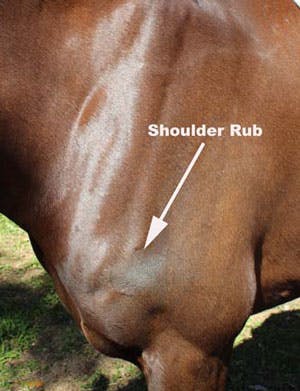
Injury
The above example shows the start of a rub mark on the shoulder from a rug that has been too big and slipping behind the wither. The image below shows what can happen in just a few days if the rug is too large and slipping over the whither which causes the rug to pull up in the chest area.

Injury
The most common fitting problem we see is horse rugs that are too big for the horse or rugs that have a very deep cut neckline. The rug should sit nice and high on the neckline, up past the wither at the base of the neck. This will ensure that the rug doesn't slip back behind the wither. Some rug brands may have a very deep cut neckline (i.e. large deep neck curve). These can be very good on stocky horses (i.e.: Quarter Horses etc) but will create all sorts of issues on horses that aren't extremely broad in the shoulders.
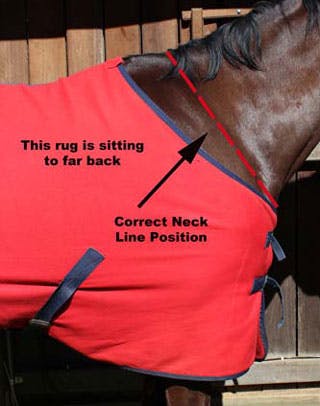
Injury
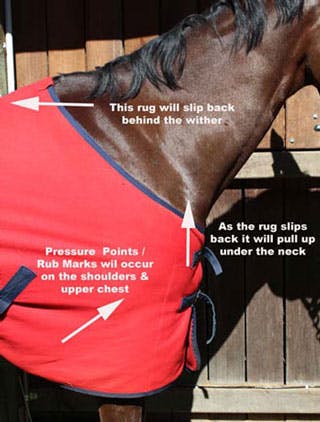
The rugs above will slip back behind the wither and pull up higher on the chest under the neck. This will create rub marks on the chest and shoulders.

The rug above shows the correct fit, nice and high up the neckline and over the wither.
Horse Rug Chest Straps
Both the upper and lower chest straps should be on the same buckle hole, ideally the first (tightest) or second buckle hole
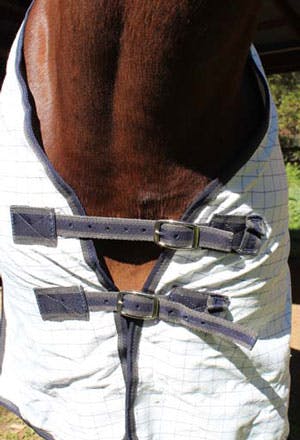
Injury
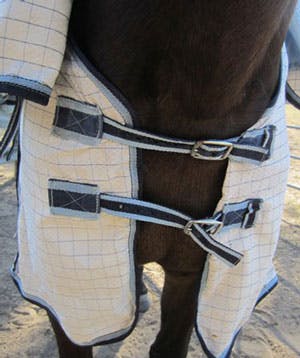
The rug above is either too small or hasn't been pulled far enough forward up the neckline and over the horses wither
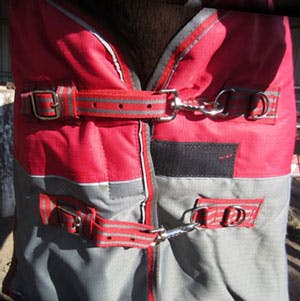
The rug fits but sits too far back. Pull it forward & buckle on 1st or 2nd hole for ample overlap at front edges of the horse rug

The rug above shows an ideal fit. Both chest straps are done up evenly.
Tail End
We often see rugs that hang way too far over the rear end of the horse. The argument is that people want to make sure the horse isn't bothered with flies. Unfortunately going for a rug one size bigger to get extra length will give you a longer rug, but keep in mind that all the other dimensions on the rug increase as well. All Caribu Horse Rugs come standard with Tent Tail flaps, there is no need to have an oversized rug.
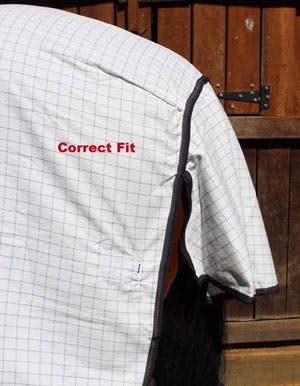
Injury
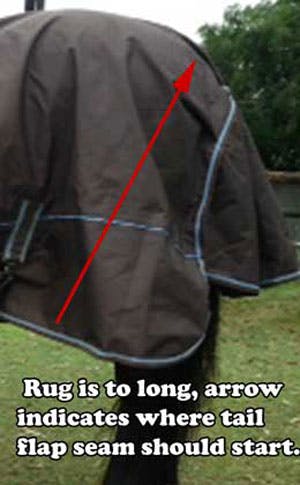
Injury
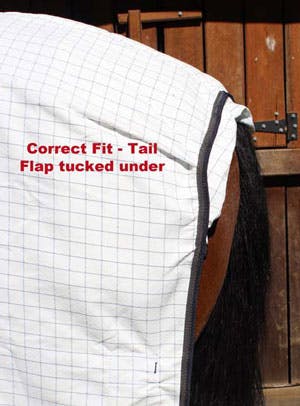
Injury
Gussets
There are lots of arguments for and against gussets. A rug with a well-positioned gusset will help prevent shoulder rub issues, ensure a better fit and increased comfort for your horse (especially when rugs have belly surcingles). However, we see far too many rugs with a gusset poorly positioned, generally too far forward, or with insufficient depth. These will create a whole new array of fitting issues.
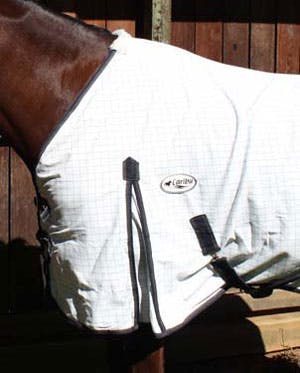
Injury
If your rug has belly surcingles, gussets play a very important role in allowing the fabric to mould around the shoulder and allow the rug to tuck up under the belly behind the surcingle straps. Without gussets, you are placing a lot more pressure on the chest and shoulders.
Horses Safety
Horses are unpredictable animals and there is always a risk of a horse dislodging rugs, hoods, fly masks from scratching, snagging or other mischief. Horses are also likely to panic when their vision is affected. When using hoods or masks on your horse you need to consider the horses temperament, location to other horses, environment and their overall suitability for wearing these types of products. We recommend only using masks, hoods or other items that may interfere with a horse’s vision in safe environments where the horse can be regularly supervised at all times.
It is very common to see rub marks from late January to early March on horses who otherwise would never get them. During January to March horses grow out of their thin summer coat with a thicker winter coat. During this time a horse coat is more susceptible to rub, especially when combined with humid/wet weather that can increases friction from rugs.
A good fit will reduce the likelihood of your horse developing rub marks on the pressure points from a rug. We design our rugs to ensure that pressure on the chest and shoulders is kept to a minimum. We also incorporate anti-rub linings in our rugs. Keep in mind that some rugs are heavier than others (like Fly mesh or Turnout Rugs) and these will apply more weight to pressure points. Rub Marks are caused from a combination of:
- Most often the rug sizing being used is incorrect, or the horses have features which make them more susceptible to pressure point marks (i.e. high wither, very lean build etc). If a rug is to small you generally see rub marks on the shoulders, if it’s too big you tend to get rubbing more on the front chest area as the rug slides back over the wither.
- During January to early March when horses grow out their summer coat with a thicker winter coat.
- Wearing rugs for extended periods (i.e. over winter) will eventually have an impact on pressure points. Bibs are advisable
- Some horses have more sensitive coats and will be fine in lighter rugs (like ripstop cotton) but may have issues in fly mesh or turnout combos which are heavier. Fine coats and are more susceptible to rubbing and may need a bib under heavier rugs to provide an extra layer of padding.

Written by The Pet.co.nz
Team
Written by The Pet.co.nz Team
A team of specialists with backgrounds in animal nursing, animal care, and all things pet related.